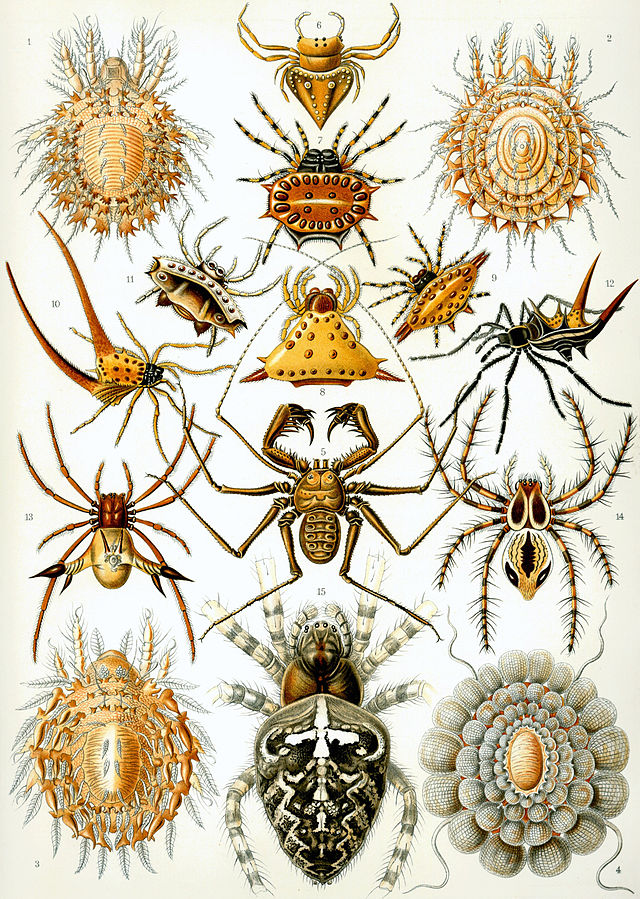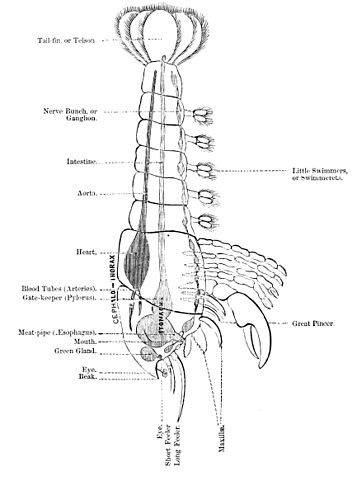Difference Between Arachnids and Crustaceans
Arachnids vs Crustaceans
Arachnids and Crustaceans are two major groups of invertebrates found in Phylum Arthropoda that have some unique features which are common to both, arachnids and crustaceans, and that make it difficult to discern the difference between these two groups of creatures. The unique features of these arthropods are the presence of jointed appendages, chitinous exoskeleton, trachea or book gills, compound eyes and endocrine system. In this article, we will be discussing the anatomical features of arachnids and crustaceans, a careful study of which is important in distinguishing the difference between arachnids and crustaceans. Phylum Arthropoda consists of five major groups; those are Arachnida, Crustacea, Chilipoda, Diplopoda, and Hexapoda (Insecta).
What are Arachnids?
Arachnids include mainly scorpions, spiders, mites and ticks. Their body has two prominent parts; prosoma (cephalothorax) and the opisthosoma (abdomen) with six pairs of segmented appendages. These appendages are connected to prosoma. The first pair of appendages is called chelicerae, which is used to manipulate and pass food into the mouth. Second pair is called pedipalp, which is used to capture food. The last four pairs act as legs. Arachnids have no mandibles and antenna unlike other arthropods like insects. Most arachnids are terrestrial, and few are secondarily aquatic. Book lungs or trachea are used as respiratory organs.

What are Crustaceans?
Crustaceans are the arthropods with two body division, called cephalothorax and abdomen. There is a shield-like carapace to enclose the cephalothorax, hence called crustaceans. Crustaceans have biramous appendages of which the segments are branched, and each branch consists of a series of segments. The appendages are found on all body segments. Cephalothorax contains two pairs of antennae, one pair of mandibles, and two pairs of maxillae. All the crustaceans are exclusively aquatic and found in both freshwater and saltwater habitats. The common examples for crustaceans include prawns, lobsters, shrimps, barnacles, and crabs.

Anatomy of a lobster
What is the difference between Arachnids and Crustaceans ?
• Arachnids have prosoma (cephalothorax) and an opisthosoma (abdomen) with six pairs of segmented appendages, whereas crustaceans have cephalothorax and abdomen. The appendages of crustaceans are found in every segment.
• Unlike crustaceans, arachnids have no antennae and mandibles.
• Most arachnids are terrestrial, and few are secondarily aquatic, whereas crustaceans are exclusively aquatic.
• Examples for arachnids include scorpions, spiders, mites, and ticks. Examples of crustaceans are prawns, lobsters, shrimps, barnacles, and crabs.
• The respiratory organs of arachnids are book lungs or trachea, whereas that of crustaceans are gills.
• Unlike the arachnids, crustaceans possess stalked compound eyes.
• Crustaceans possess carapace, but arachnids do not.
Images Courtesy: Arachnids and Lobster intestinal diagram via Wikicommons (Public Domain)
ncG1vNJzZmivp6x7pbXFn5yrnZ6YsqOx07CcnqZemLyue8OinZ%2Bdopq7pLGMm5ytr5Wau26t0ZqaoaaZmcBurc2dZK%2BrXZi%2Ftr%2FTmpqemZ6ofA%3D%3D